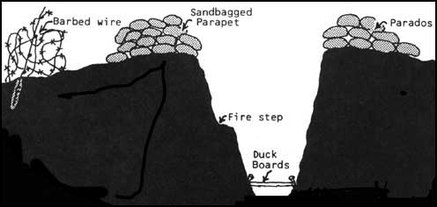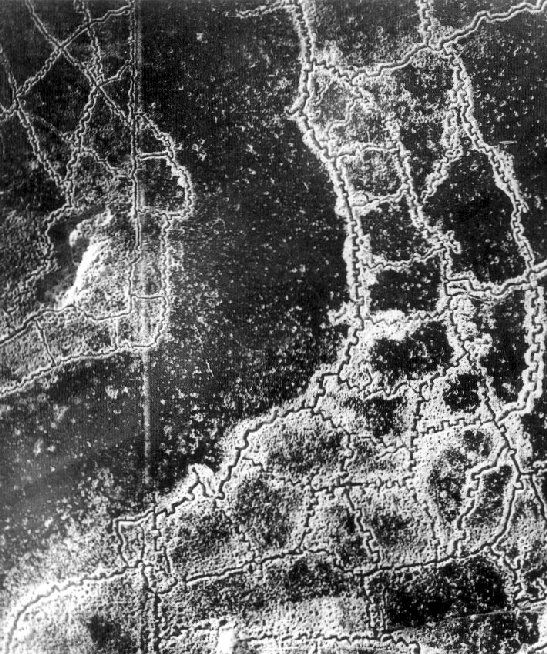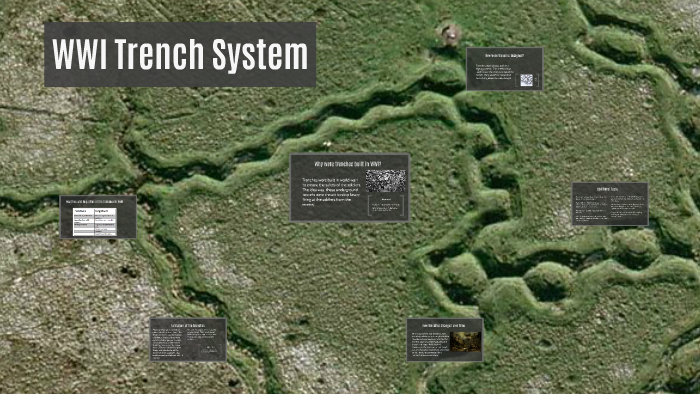If a mortar grenade or artillery shell would land in the trench it would only get the soldiers in that section not further down the line. The front line also called the outpost or the fire line the support trench and the reserve trench all built parallel to one another and anywhere from 100 to 400 yards apart.
There would still be soldiers on defense they have walls to hide behind.

. The WWI trenches were built as a system in a zigzag pattern with many different levels along the lines. All the trenches were dug in a zig-zag pattern so the enemy couldnt shoot straight down the line and kill many soldiers. The trench system had a main fire trench or front line.
Much more importantly square corners absorbed the shock waves from incoming artillery shells. When it would rain the trenches would flood and get really muddy. All the trenches were dug in a zig-zag pattern so the enemy couldnt shoot straight down the line and kill many soldiers.
The front line was the first line of defense and attack for the trenches. Trenches were dug in a zigzag pattern so that if an enemy entered the trench he could not fire straight down the line. Why were trenches dug in a zig zag pattern.
Why were the trenches built in a zigzag pattern. Without them the shock wave would be funneled and concentrated along a straight trench to kill men for dozens of meters. All the trenches were dug in a zig-zag pattern so the enemy couldnt shoot straight down the line and kill many soldiers.
If a mortar grenade or artillery shell would land in the trench it would only get the soldiers in that section not further down the line. Why were trenches dug in a zigzag or saw toothed pattern. The trench system had a main fire trench or front line.
The zig zag pattern made it much easier to defend the trench if the enemy got into them. This prevented gunfire or shrapnel from being projected along the length of a trench if a shell or enemy soldier ever landed inside. Zigzag attacked Stanley because Stanley was putting dirt in Zigzags side of the hole and Zigzag was getting mad and that caused Zigzag to hit Stanley with the shovel.
Why did zigzag attack Stanley. They could smell cordite the lingering odour of poison gas rotting sandbags stagnant mud cigarette smoke and cooking food. Trenches were usually dug in a zig-zag pattern rather than a straight line.
The trenches were dug by soldiers and there were three ways to dig them. Trenches were usually dug in a zig-zag pattern rather than a straight line. If the enemy reached your trench zigzags made it easier for you to regroup and contain them.
Trenches were dug in a zigzag pattern so that if an enemy entered the trench he could not fire straight down the line. The main trench lines were connected by communicating trenches allowing for the movement of messages supplies and soldiers and were lined with barbed wire. All the trenches were dug in a zig-zag pattern so the enemy couldnt shoot straight down the line and kill many soldiers.
So enemy troops couldnt fire a straight line all the way down the trench Why were trenches dug in a zigzag pattern. However if the trench was zigzag even if the enemy managed to get in the trench they could only control part of it. What did soldiers eat in the trenches.
Trenches were dug in a zigzag pattern so that if an enemy entered the trench he could not fire straight down the line. The WWI trenches were built as a system in a zigzag pattern with many different levels along the lines. A typical trench system included a line of three or four trenches.
They were dug in a zigzag pattern so that if an enemy breached the defenses and entered the trench he would not be able to kill a lot of soldiers since they would not be. Since there was water in the trenches when it rained a fungus on the soldiers feet would grow. The answer of course was the development of other more sophisticated killing machines from the fragile biplane and lumbering tank to the battleship and submarine that so characterised the conduct of the next war.
Trenches were dug in this way that if there was a blast from an exploding shell it would be confined to small section of the trench. Most trenches were between 1-2 metres wide and 3 metres deep. These were meant to protect the soldiers feet from the water in the trenches to try and prevent Trench Foot.
Why Were The Trenches Built In Zig Zags. Trenches werent dug in straight lines. The main trench lines were connected by communicating trenches allowing for the movement of messages supplies and.
This prevented gunfire or shrapnel from being projected along the length of a trench if a shell or enemy soldier ever landed inside. An advantage of the trenches was that they were dug in a zigzag pattern. All the trenches were dug in a zig-zag pattern so the enemy couldnt shoot straight down the line and kill many soldiers.
The trench system had a main fire trench or front line. An advantage of the trenches was that they were dug in a zigzag pattern to prevent the enemy from firing down the line. The trenches had a horrible smell.
Why were the trenches built in zig zags. Another very important reason for the trench being zigzag is that if a-bomb or shell landed in the trench the blast could not travel far. Why were trenches dug in a zig-zag pattern.
The bulk of their diet in the trenches was bully beef caned corned beef bread and biscuits.
Significance Of The Shape Of The Trench World War 1 Class 6

Box 1 Trench Warfare April Smith S Technology Class

Trench Construction In World War I Diana Overbey
Why Were Trenches Dug In A Zigzag Pattern Quora

Wwi Trench Warfare Lesson For Kids Explanation Facts Study Com




0 comments
Post a Comment